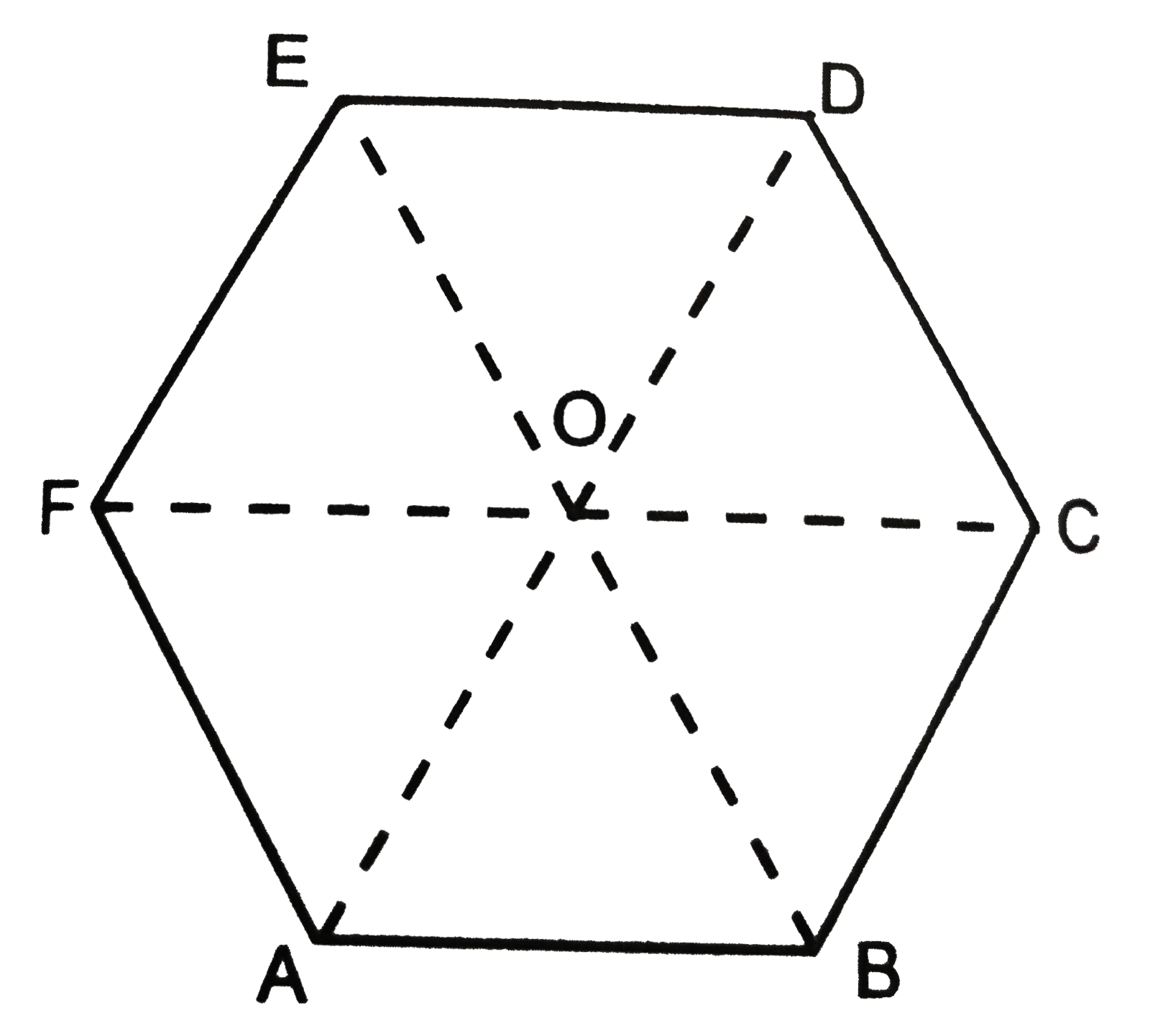ln a quadrilateral ABCD,−−→AC is the bisector of the (−−→AB∧−−→AD) which is 2π3,15∣∣∣−−→AC∣∣∣=2∣∣∣−−→AB∣∣∣=5∣∣∣−−→AD∣∣∣ then cos(−−→BA∧−−→CD) is
A
cos−1√147√2
B
cos−1√217√3
C
cos−12√7
D
cos−12√714
Text Solution
The correct Answer is:c
Let ∣∣∣−−→AC∣∣∣=λ>0
Then from 15∣∣∣−−→AC∣∣∣=3∣∣∣−−→AB∣∣∣=5∣∣∣−−→AD∣∣∣∣−−−−−−−−−→AB∣=5λ
Let tehta the angle between −−→BAand−−→CD. Then
cosθ=−−→BA.−−→CD∣∣∣−−→BA∣∣∣∣∣∣−−→CD∣∣∣=−−→b.(→d−→c)∣∣→b∣∣∣∣→d−→c∣∣ (i)
Now −→b.(→d−→c)=→v.→c−→b.→d
∣∣→b∣∣|→c|cosπ3−∣∣→b∣∣∣∣→d∣∣cos(2π)3
(5λ)(λ)12+(5λ)(3λ)12
5λ2+15λ22
10λ2
Denominator of (i) = ∣∣→b∣∣∣∣→d−→c∣∣
now ∣∣→d−→c∣∣2=∣∣→d∣∣2+|→c|2−2→c.→d
10λ2−3λ2
7λ2
Denominator of (i) = (5λ)(√7λ)=5√7λ2
cosθ=10λ25√7λ2=2√7

|
Topper's Solved these Questions
- DIFFERENT PRODUCTS OF VECTORS AND THEIR GEOMETRICAL APPLICATIONS BOOK - CENGAGECHAPTER - DIFFERENT PRODUCTS OF VECTORS AND THEIR GEOMETRICAL APPLICATIONS EXERCISE - Exercise 2.1
18 Videos
- DIFFERENT PRODUCTS OF VECTORS AND THEIR GEOMETRICAL APPLICATIONS BOOK - CENGAGECHAPTER - DIFFERENT PRODUCTS OF VECTORS AND THEIR GEOMETRICAL APPLICATIONS EXERCISE - Exercise 2.2
15 Videos
- CONIC SECTIONSBOOK - CENGAGECHAPTER - CONIC SECTIONSEXERCISE - Solved Examples And Exercises
1255 Videos
- LIMITS AND DERIVATIVESBOOK - CENGAGECHAPTER - LIMITS AND DERIVATIVESEXERCISE - Solved Examples And Exercises
288 Videos
Similar Questions
Knowledge Check
In a quadrilateral ABCD, −−→AB+−−→DC=
A−−→AB+−−→CBB−−→AC+−−→BDC−−→AC+−−→DBD−−→AD−−−→CBIn a quadrilateral ABCD. −−→AC is the bisector of −−→AB and −−→AD, angle between −−→AB and −−→AD is 2π/3 . 15∣∣∣−−→AC∣∣∣=3∣∣∣−−→AB∣∣∣=5∣∣∣−−→AD∣∣∣. Then the angle between −−→BA and −−→CD is.
Acos−1(√14)7√2Bcos−1(√21)7√3Ccos−1(2)√7Dcos−1(2√7)14If ABCDE is a pentagon, then
−−→AB+−−→AE+−−→BC+−−→DC+−−→ED+−−→AC is equal toA4−−→ACB2−−→ACC3−−→ACD5−−→AC
Given a parallelogram ABCD. If ∣∣∣−−→AB∣∣∣=a,∣∣∣−−→AD∣∣∣=b&∣∣∣−−→AC∣∣∣=c , then −−→DB.−−→AB has the value
View SolutionIf ABCD is a quadrilateral, then −−→BA+−−→BC+−−→CD+−−→DA=
View SolutionIf ABCDE is a pentagon, then
−−→AB+−−→AE+−−→BC+−−→DC+−−→ED+−−→AC is equal to
View Solution−−→ACand−−→BD are the diagonals of a parallelogram ABCD. Prove that
(i)−−→AC+−−→BD−2−−→BC
(ii) −−→AC−−−→BD−2−−→AB
View SolutionABCDEF is a regular hexagon, Fig. 2 (c ) .65. What is the value of
(−−→AB+−−→AC+−−→AD+−−→AE+−−→AF?
 .
.
View Solution
